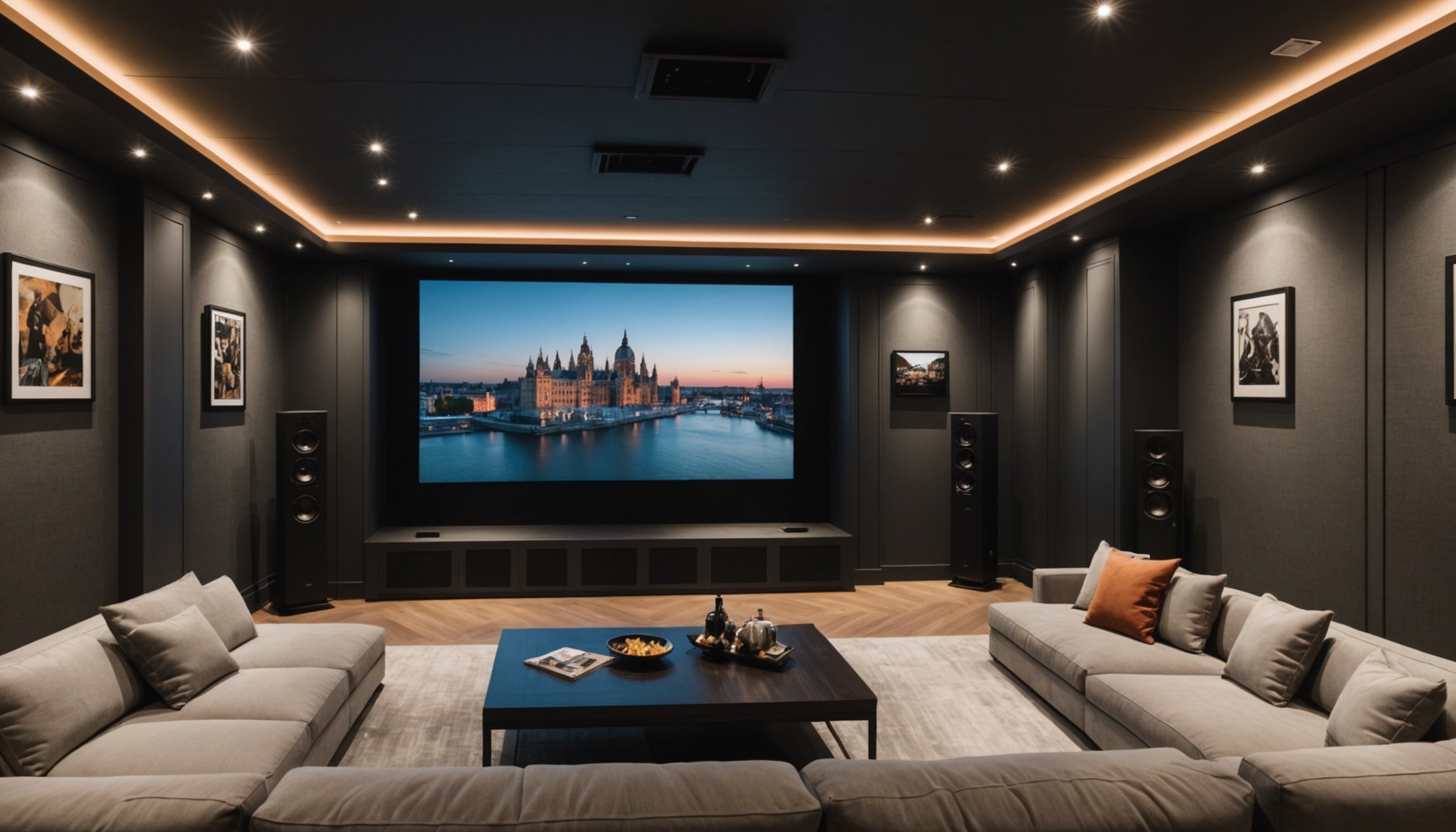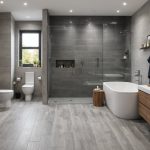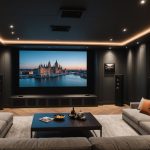Transforming your terrace house into a cinema paradise requires effective soundproofing to ensure an immersive experience. Noise from the outside can disrupt movie nights, but fear not! This guide provides practical strategies tailored for terrace houses to minimize sound leakage and enhance your viewing pleasure. From choosing the right materials to clever design tips, discover how to create a serene environment perfect for your home cinema. Unleash the full potential of your space and enjoy films like never before.
Understanding Soundproofing Basics
Soundproofing is essential for creating an optimal home cinema experience by reducing unwanted noise. Acoustic principles play a key role in understanding how sound travels and how it can be controlled. Sound transmission occurs when sound waves pass through walls, floors, and ceilings, potentially disrupting the audio quality of your cinema setup.
Dans le meme genre : Smart Waste Management Tips for Small Leeds Kitchens: Boost Your Recycling Efforts!
There are two primary types of noise to consider: airborne noise and impact noise. Airborne noise includes sounds like voices and music, which travel through the air and can penetrate walls. Impact noise, on the other hand, results from physical contact, such as footsteps or furniture movement, causing vibrations that travel through structures.
Soundproofing is crucial in shared living environments where noise can easily transfer between rooms, affecting everyone’s comfort. By implementing effective soundproofing techniques, you can significantly reduce noise transmission, enhancing your home cinema experience.
A découvrir également : Transform your space with 95% recycled teak ipé cladding
Some practical approaches to soundproofing include:
- Insulation: Adding dense materials within walls and ceilings to absorb sound.
- Sound barriers: Installing heavy curtains or acoustic panels to block noise.
- Decoupling: Creating air gaps in construction to prevent vibrations from passing through.
Understanding these acoustic principles allows you to make informed decisions about soundproofing, ensuring a more immersive and enjoyable cinema experience.
Essential Soundproofing Materials
When creating a home cinema, selecting the right soundproofing materials is crucial. These materials help control sound transmission and enhance the audio quality of your setup. Commonly used materials include mass loaded vinyl and acoustic foam. Mass loaded vinyl is a dense material that effectively blocks sound, making it ideal for reducing airborne noise. Acoustic foam, on the other hand, is designed to absorb sound waves, minimizing echo and improving clarity within the room.
Comparing Insulation Options
For terrace houses, choosing the right insulation can make a significant difference. Fibreglass insulation is popular due to its affordability and effectiveness in absorbing sound. However, it may not be the best option for those sensitive to allergens. Mineral wool insulation offers better sound absorption and is more resistant to fire and moisture, though it comes at a higher cost.
Recommendations for Home Cinemas
For a tailored home cinema experience, consider using a combination of acoustic panels and mass loaded vinyl. Acoustic panels can be strategically placed to manage sound reflections, while mass loaded vinyl can be installed within walls to block external noise. These products work together to create a more immersive and enjoyable viewing experience.
Techniques for Effective Soundproofing
To achieve optimal soundproofing in your home cinema, it is essential to understand various soundproofing techniques. Whether you are a DIY enthusiast or prefer professional installation, these methods can significantly enhance your sound environment.
Step-by-Step Process for Soundproofing
Soundproofing walls, ceilings, and floors requires a systematic approach. Begin by identifying areas where sound leakage is most prominent. For walls, consider installing acoustic panels or mass loaded vinyl. These materials help in reducing noise transmission effectively. Ceilings can benefit from adding a second layer of drywall with a sound-dampening compound. For floors, use thick carpets or rugs to minimize impact noise.
Sealing Gaps and Cracks
Sealing gaps and cracks is crucial to prevent unwanted sound leakage. Use acoustic sealant to fill in any spaces around windows, doors, and electrical outlets. This simple yet effective method ensures that sound does not escape through small openings.
Creative DIY Solutions
For those on a budget, DIY soundproofing offers creative solutions. Consider using heavy curtains or homemade soundproofing panels made from recycled materials. These cost-effective options can help reduce noise without a significant investment. By implementing these techniques, you can create a more immersive and enjoyable home cinema experience.
Addressing Common Soundproofing Challenges
When dealing with soundproofing challenges, especially in terrace houses, several noise issues frequently arise. These homes often share walls and floors with neighbours, making it difficult to contain or block out sound effectively.
Identifying Common Pitfalls
One of the primary pitfalls in soundproofing terrace houses is the shared walls. These walls can easily transmit sound, leading to disturbances. External noise interference, such as street sounds, can also penetrate through windows and doors, affecting the overall sound quality within your home cinema.
Solutions for Shared Walls and Floors
To tackle the issue of shared walls, consider installing mass loaded vinyl or adding a second layer of drywall with sound-dampening materials. This can significantly reduce noise transfer. For shared floors, using thick carpets or rugs can help absorb impact noise, creating a quieter environment.
Strategies to Minimize External Noise
Minimizing external noise interference involves sealing gaps around windows and doors with acoustic sealant. Additionally, installing heavy curtains can further block out unwanted sounds. These problem-solving strategies are essential in creating an optimal soundproofing setup, ensuring that your home cinema remains undisturbed by external and internal noise challenges.
Cost Considerations for Soundproofing
When embarking on a soundproofing project, understanding soundproofing costs is crucial for effective financial planning. The expenses can vary significantly based on the materials and techniques chosen.
Budgeting begins with an overview of potential costs. High-end solutions, such as professional installation of mass loaded vinyl or custom acoustic panels, can be expensive but offer superior soundproofing. Conversely, cost-effective options like DIY soundproofing with heavy curtains or recycled materials provide a budget-friendly alternative, though they may not offer the same level of noise reduction.
Consideration of soundproofing costs should include both materials and installation. While professional services ensure optimal results, they add to the overall expense. For those on a tight budget, DIY approaches can significantly cut costs, though they require more time and effort.
Effective budgeting involves prioritizing areas with the highest sound leakage and allocating resources accordingly. For instance, investing in quality materials for shared walls or floors can have a more significant impact than focusing on less critical areas. By carefully planning and evaluating different options, you can achieve your soundproofing goals without exceeding your financial limits. Proper financial planning ensures a successful project, enhancing your home cinema experience.
Case Studies and Real-Life Examples
Exploring soundproofing case studies offers valuable insights into achieving optimal results in terrace houses. These home cinema examples demonstrate the effectiveness of various techniques and materials, providing inspiration and guidance for your soundproofing journey.
One notable success story involves a terrace house where the owner faced significant noise issues due to shared walls. By employing mass loaded vinyl and acoustic panels, the homeowner successfully reduced noise transmission, creating a serene cinema environment. This project highlights the importance of selecting the right materials for shared structures.
Another compelling example showcases the transformation of a living room into a dedicated home cinema. Initially plagued by external noise interference, the owner implemented heavy curtains and acoustic sealant to minimize sound leakage. The result was a dramatic improvement in audio quality, underscoring the impact of addressing external noise sources.
Visual case studies further illustrate the effectiveness of soundproofing efforts. Before-and-after images reveal the tangible benefits of strategic implementations, such as thicker walls and enhanced insulation. These examples serve as a testament to the power of well-executed soundproofing in enhancing the home cinema experience.
By examining these soundproofing case studies, you can glean valuable lessons and apply proven strategies to your own projects, ensuring a successful outcome.
Frequently Asked Questions
Navigating the world of soundproofing can be daunting, particularly in terrace houses. Here, we address some common questions and provide expert answers to help you achieve the best results.
What are the most effective soundproofing techniques for terrace houses?
For terrace houses, mass loaded vinyl and acoustic panels are highly effective. Mass loaded vinyl acts as a sound barrier, preventing noise from penetrating walls. Acoustic panels absorb sound waves, reducing echoes within a room. Together, these materials enhance soundproofing by addressing both airborne and impact noise.
Are there any misconceptions about soundproofing?
A common misconception is that thicker walls alone will solve sound issues. While they help, effective soundproofing requires a combination of materials and techniques, such as sealing gaps with acoustic sealant and using decoupling methods to prevent vibrations from transferring through structures.
How can I maximize soundproofing effectiveness?
To maximise soundproofing, identify and focus on areas with the highest sound leakage, such as shared walls and floors. Invest in quality materials like mineral wool insulation for better sound absorption. Additionally, consider professional consultation for tailored advice and installation to ensure optimal results.
Additional Resources and Visual Aids
Enhancing your understanding of soundproofing can be greatly aided by exploring various soundproofing resources. Delve into recommended books and articles that provide in-depth insights into effective techniques. Websites like Soundproofing101 offer comprehensive guides and expert advice tailored to different environments, including terrace houses.
Visual aids, such as diagrams and images, play a crucial role in illustrating complex soundproofing techniques. These resources can simplify the process of understanding how different materials and methods work together to reduce noise. For instance, cross-sectional diagrams of walls showing layers of mass loaded vinyl and acoustic panels can help you visualise the setup and its benefits.
Incorporating technology can further streamline your soundproofing planning. Tools and apps, such as Decibel X, allow you to measure sound levels in your home, helping you identify areas that require attention. Apps like Home Design 3D provide a platform to experiment with different layouts and materials virtually, ensuring a well-thought-out plan before physical implementation.
By leveraging these helpful tools, you can effectively plan and execute your soundproofing project, enhancing your home cinema experience with confidence and precision.












